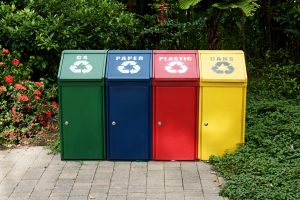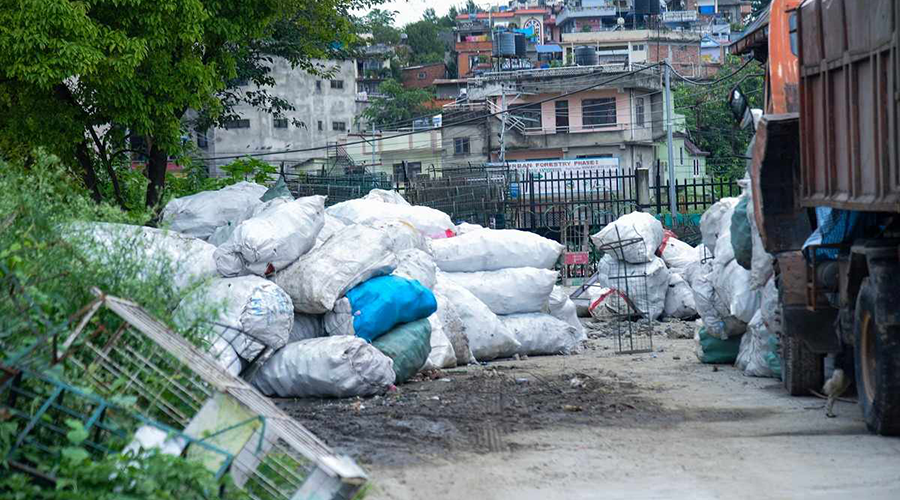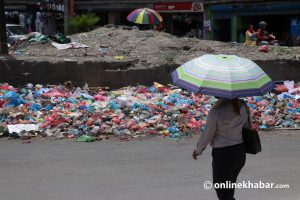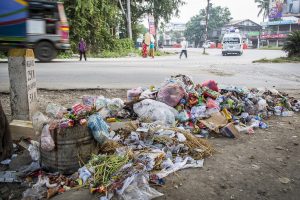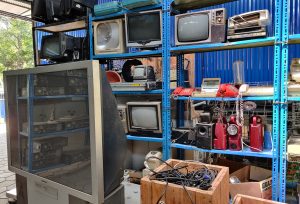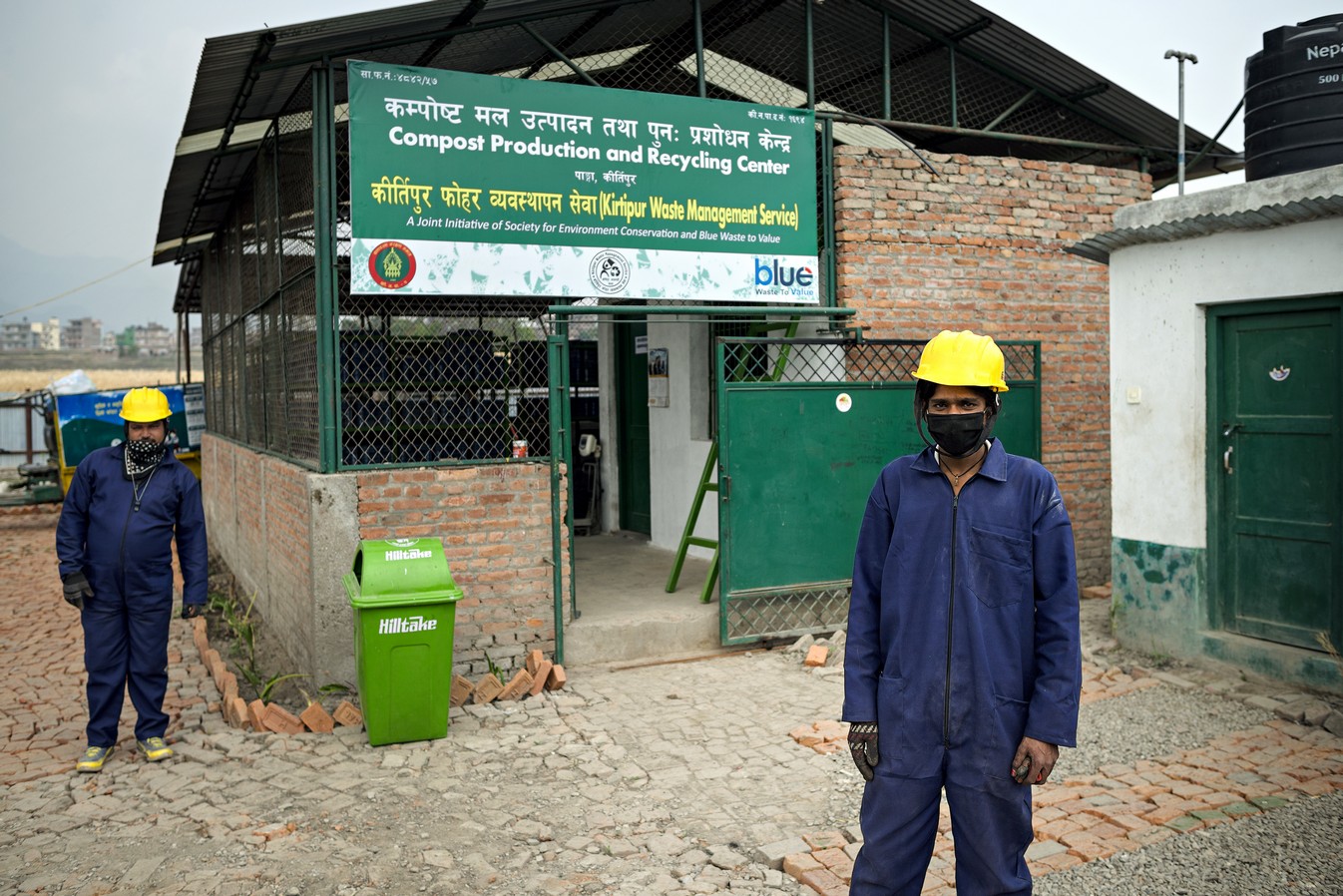
After working for various organisations and helping them manage waste for nearly two decades, Nabin Bikash Maharjan decided to do something on his own. Realising that the government didn’t really have a plan to manage waste in the Kathmandu Valley, Maharjan in 2014 felt it was the right time to use his expertise and turn it into a business.
Then, he established Blue Waste to Value.
“I was involved in various projects funded by the European Union and local governments. Through the project, I helped build many waste recycling plants throughout Nepal; but I realised people didn’t really care about it. That is why I quit the government job and started this venture with Varun Saraf,” he adds.
Obstacles to vision
Maharjan says that company started out because both he and Saraf felt the need to make Kathmandu better for the future.
“Our main vision was to turn waste into something valuable. We wanted to reduce the waste going into the landfills.”
But their plan wasn’t going to be easy. The first challenge came when they could not acquire land for the project.
“No one wanted to lease us their land. Everyone said that if they had a waste management facility near their property, it would devalue their land. We looked for four to five months. After no one gave us land to start our project, we started it in the backyard of Hotel Yak and Yeti.”
Saraf, who is also the owner of Hotel Yak and Yeti, felt that if they wanted to something different, it had to start at home.
“Varun and I felt that doing it here would give us a base. After then, we could expand it further.”
Maharjan who had been part of similar projects in the past then went looking for other places so that he could expand the project. His plan was to set up various plants across the valley in a manner which could be decentralised.
“I wanted to this because that is what happens abroad. We need to decentralise a lot of things and waste management should be on the top of that list.”

One day, Maharjan went to Kirtipur to monitor one of the projects he was part of. He was dismayed at the state of the project because it wasn’t functioning well. With no one to look after the machines, the project was all but finished. But Maharjan decided to revive it.
“I called a meeting and asked the people to come onboard with me. I told them my business plan after which many people opted to join in as partners.”
After starting the community project in Kirtipur in late 2015, he then tied up with another hotel owned by Saraf. Then, he started a commercial project at Hyatt Regency Kathmandu in 2016. Since then, he has already added a new community project in Shankharapur in 2018.
Addressing the ‘wrong manner’
The challenge to getting people onboard, according to Maharjan, is associated with different approaches to waste management.
.He says even though the private sector has been managing waste in Kathmandu for a while, the manner at which it is being done isn’t correct.
“Everyone wants to do something new, but no one does it. When I reach out to them and try to tell them about my idea, no one wants to do it. Everyone wants to send the waste to the landfill without proper segregation,” adds Maharjan.
He adds that he is even willing to train people and share his technology with other people. But no one is willing to join him, he adds.
Maharjan says that he has taught his staff to think differently. While most of them were used to throw the waste onto the landfill, they now have been taught how to properly segregate the waste.
“I treat my staff differently. I have made masks and gloves mandatory. I want them to be safe and not have any diseases. I’ve also done their insurance.”
But more than that, he has taught them how to manage waste; not just at work, but also at home. He shares many of his staff come up to him and ask him tips on recycling and composting.
“My staff even posed for a photo when they went to pick up Everest trash. They aren’t ashamed. They have a feeling that they are contributing to the society,” he adds.
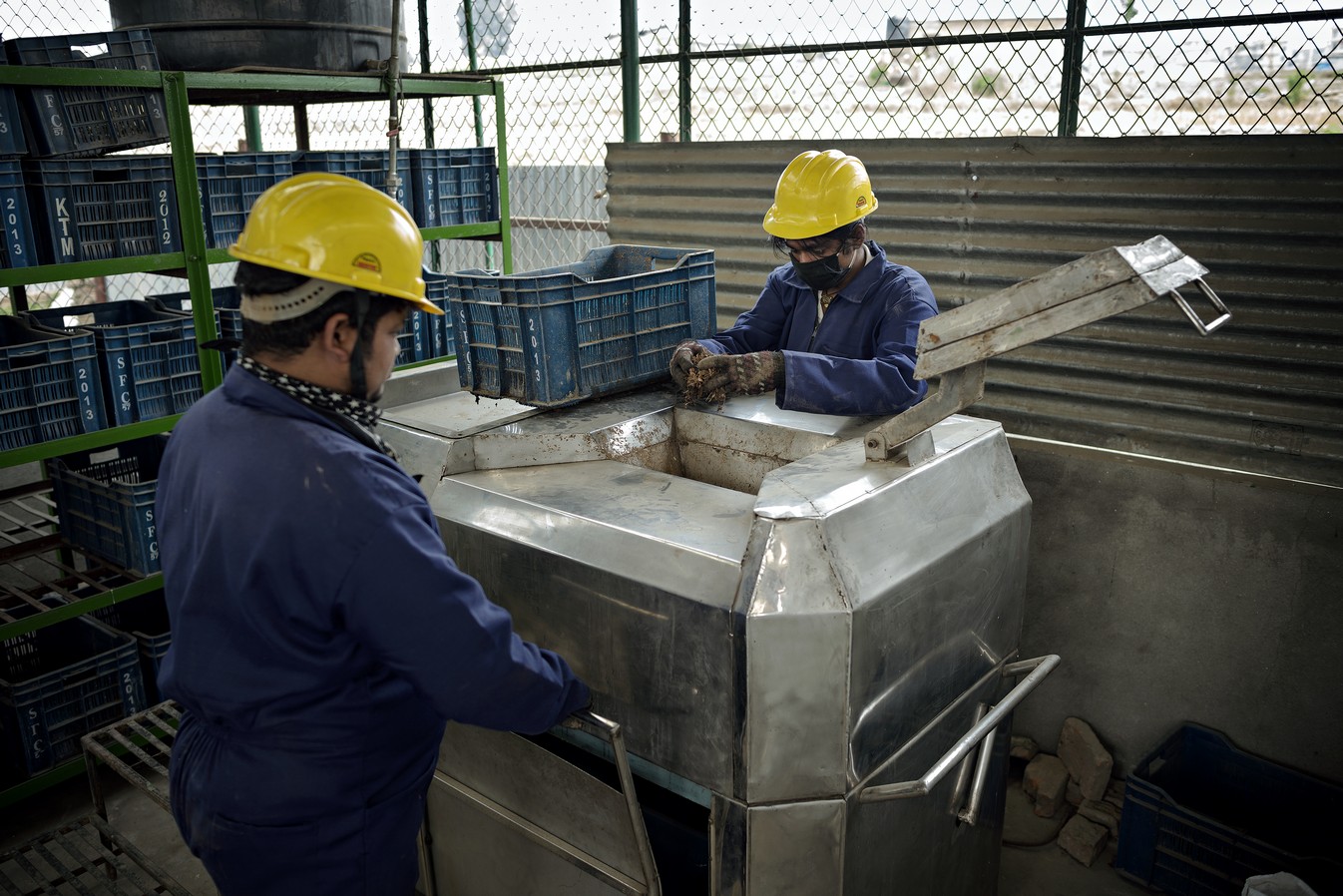
The right way
Maharjan says that the first step of waste management is proper segregation, which is why he has taught his staff to separate waste into two different categories – dry and wet.
The dry waste is segregated accordingly where they separate plastics, paper, cloth and glass and sell them to interested parties.
The wet waste, however, goes into cold storage where people come and take most of the green waste for their cattle and the rest are used for compost and preparing fertilisers.
They have also recently started taking e-waste, which they try to refurbish before disassembling and selling it.
Blue waste to Value is also affiliated with the Everest Cleaning Campaign.
“I’ve been very close to the Sherpa community and the Sagarmatha Pollution Control Committee. When I saw then dump waste into pits and burn them, I felt very bad. It was killing the environment and would be negative publicity in front of thousands of tourists who visit the place.”
That is why in 2017, he got together with Tara Air and SPCC and started to bring down waste from the Everest region.
Maharjan says he is hopeful that more people will come onboard with his idea. He feels that everyone needs to come together if they want a clean city.
In the future, they also plan to do more upcycling products; but for now, his concentration is to make sure that people learn the importance of waste management.
“We need to leave behind a better place for the upcoming generation,” he adds.
Photos: Blue waste to value






